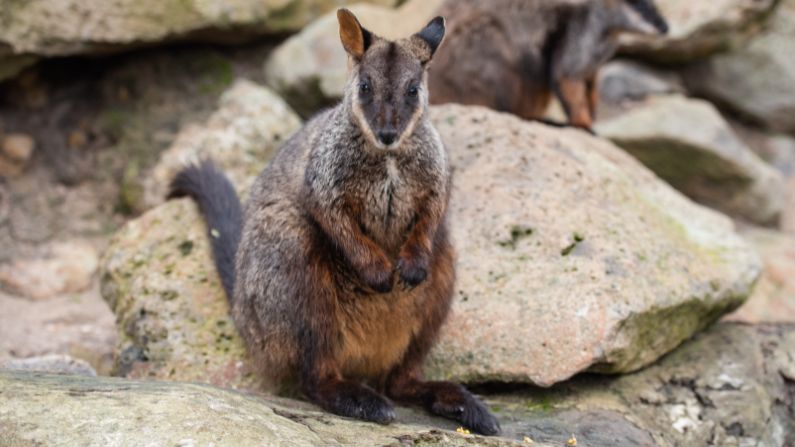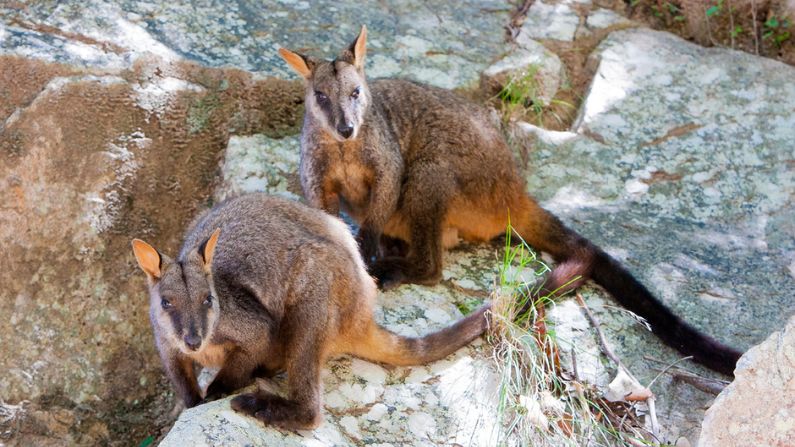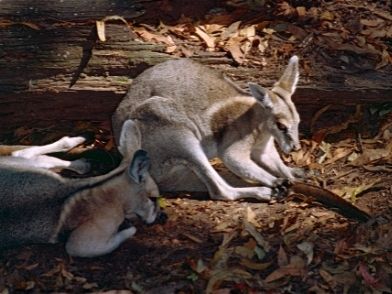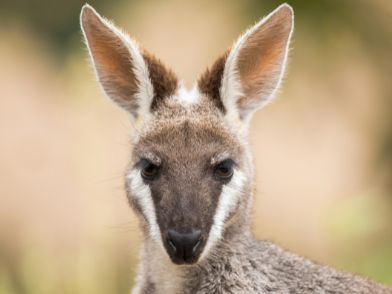Brush-tailed rock-wallaby
© Canva NFP
The highly agile brush-tailed rock-wallaby (Petrogale penicillata) is one of the largest rock wallabies, though small compared to other wallaby species. It is named for its typically brown to black bushy tail and its preference for rocky habitats. Small, isolated populations of brush-tailed rock-wallabies are found in mountainous terrain along Queensland’s Great Dividing Range, in eastern New South Wales, and Victoria.
Quick facts
COMMON NAME:
Brush-tailed rock-wallaby
Brush-tailed rock-wallaby
SCIENTIFIC NAME:
Petrogale penicillata
FAMILY:
Macropodidae
ALSO KNOWN AS:
Small-eared rock-wallaby
QLD CONSERVATION STATUS:
Vulnerable
NATIONAL CONSERVATION STATUS:
Vulnerable
How we are helping the brush-tailed rock-wallaby
In 2022, Wildlife Queensland established a dedicated Brush-tailed Rock-wallaby Conservation Network with the goal of raising awareness and building community support for conserving this vulnerable wallaby species, which has declined considerably since European colonisation and now exists patchily within mountainous terrain along Queensland’s Great Dividing Range.

Did you know?
John Edward Grey first described this wallaby and provided its scientific name in 1827 from a drawing by Lewin from what was then known as New Holland.

Threats to the brush-tailed rock-wallaby
- Foxes, feral cats, and wild dogs.
- Habitat degradation and loss, including weed invasion.
- Increasing urbanisation and intensification of agriculture and grazing in South East Queensland.
- Changes in fire regimes.
- Disease passed from feral cats (toxoplasmosis and hyatidosis).
Home range
- Estimated 6–30 ha.
Distribution
- Populations declining throughout the western and southern areas of its range.
- Other populations have become more isolated. Isolated populations in Queensland include a colony at the artificial Perseverance Dam near Crows Nest, Queensland.
Distinct populations
- Northern group — South East Queensland into north-east New South Wales (estimated 10,000–20,000 animals).
- Central group — south of the Hunter River to south-eastern New South Wales (800–900).
- Southern or Victorian — Snowy River National Park (<20).
Description
- Small agile wallaby with a black stripe from forehead to back of head and a pale cheek stripe.
- Back fur is grey to dark brown, shaded with red on the flanks and grey on the neck and shoulders.
- Chest and belly fur is dark to light brown, sometimes with a white blaze on the chest.
- The long tail is darker and bushier towards the tip.
- Males are about 55 cm long (tails about 60 cm), females slightly shorter and tails slightly shorter.
- Male wallabies can weigh from 5.5 kg to nearly 11 kg, but average about 8 kg.
- Females weigh about 6 kg but vary on either side of that weight.
Signs
- Scats are similar in size to brush-tailed possum scats but blacker, rougher textured and with pointed ends.
Habitat
- Rocky escarpments, outcrops and cliffs.
- Particularly likes complex structures with fissures, caves and ledges that face north.
Ecology
Life history and behaviour
- Live about 5–10 years.
- Family groups consist of 2–5 adults with 1-2 juveniles.
- Young stay in the pouch for 6 months, weaning at 9 months.
- Juveniles follow their mother for several months after leaving the pouch.
- Bask and shelter during the day in rock crevices, caves and overhangs.
- Active and foraging at night.
- Highly agile.
Breeding
- Females mature at 1–2 years.
- They breed at any time of the year in the southern part of their range.
- Dominant males associate and breed with up to four females.
Food
- Browse on vegetation in and around rocky habitat.
- Eat grasses and forbs, plus foliage and fruits of shrubs and trees.




